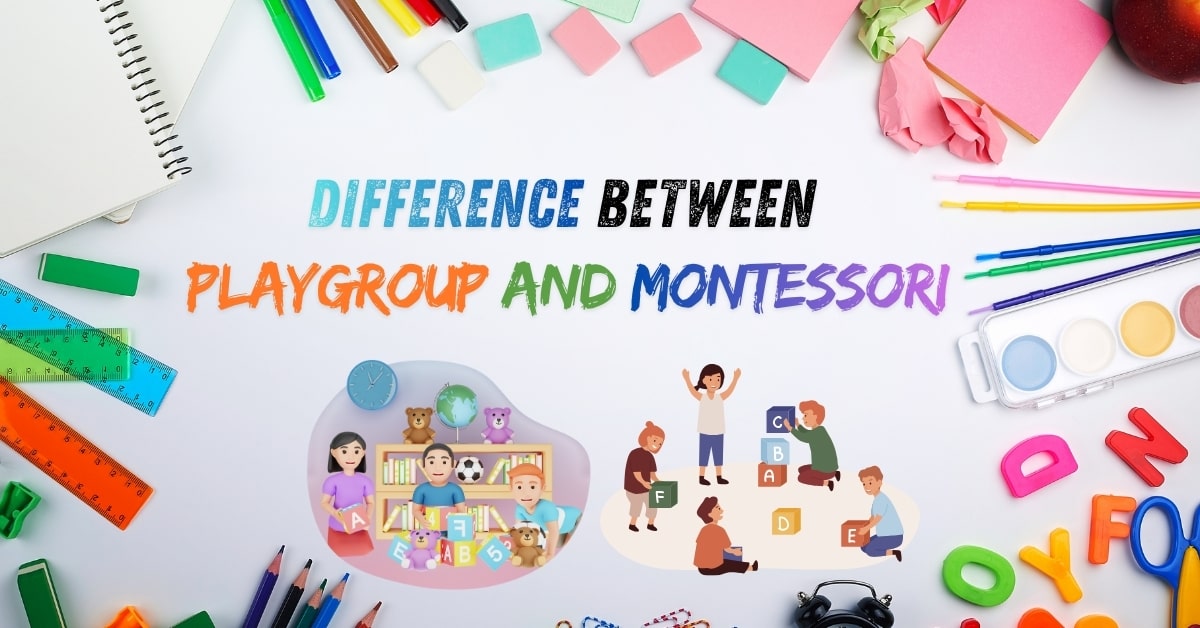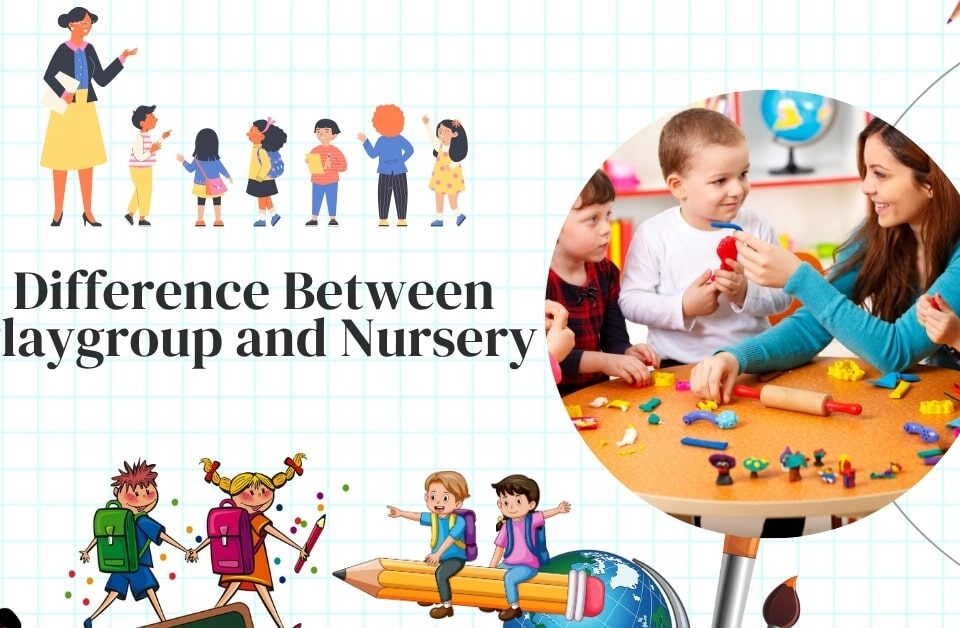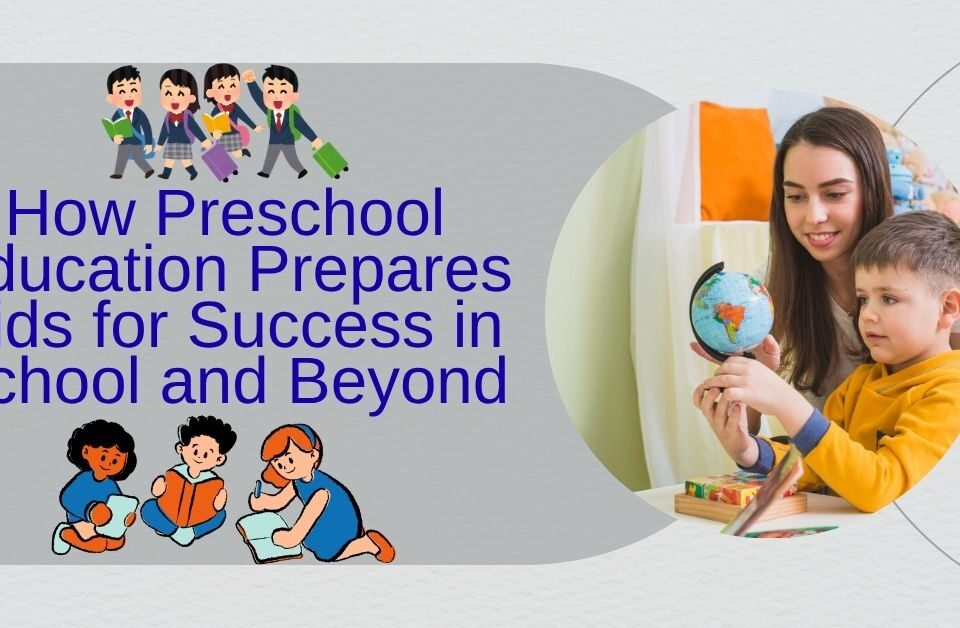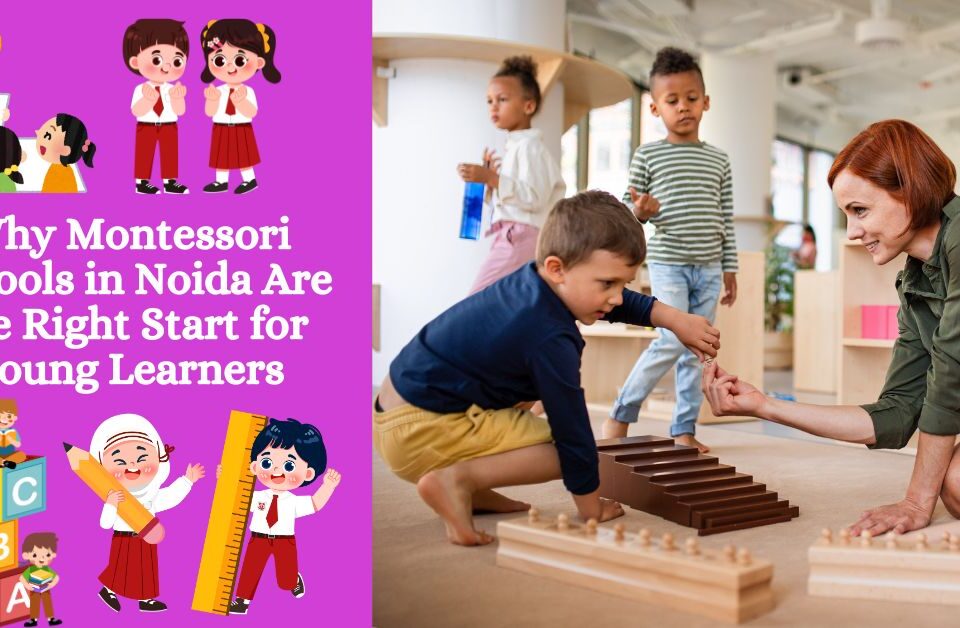
Difference Between Playgroup and Nursery: A Parent’s Guide
October 23, 2025Difference Between Playgroup and Montessori: A Parent’s Complete Comparison Guide
Understanding the Difference Between Playgroup and Montessori Learning Methods
Every parent wants the best for their children. They want to make no mistakes when they’re carving out the beginning of their child’s education journey.
Hence, the difference between playgroup and Montessori can often feel confusing or complicated for parents. You can feel more so due to different kinds of advice, hearsay, and expectations.
However, this blog paints a clear picture of playgroup vs Montessori. Once you go through the different philosophies, methods, and benefits of each, it’ll be easier for you to make the right decision for your kids.
What Is Playgroup? Understanding Play-Based Learning for Toddlers
Between play-based learning vs Montessori, the former is nothing but an early childhood setup for toddlers who are often aged between 1.5 to 3 years. The setting is designed to gently introduce them to a social and semi-structured environment.
The focus is on free play, exploration, sensory experiences, songs, stories, and gentle routine. Thus, it’s less about academic goals, but more about comfort, curiosity, and interaction with other kids.
Playgroup can be considered a child’s first experience away from full parental supervision in a social setting. It helps children transition into experiencing different group dynamics, share, follow simple instructions, and develop early social and emotional skills.
Since a playgroup emphasises play-based learning, children are free to participate in whichever activities draw their attention.
Also Read: Difference Between Playgroup and Nursery: A Parent’s Guide
What Is Montessori Method? Philosophy, Age Group, and Learning Approach Explained
The Montessori method was founded by Dr. Maria Montessori over a century ago! Since then, it has become quite popular. That’s because it is a child-centred educational philosophy which promotes independence in a carefully prepared environment.
The Montessori method of learning is usually recommended for children who are aged between 2 1⁄2 and 3 to 6 years old.
If you want the Montessori method explained, it’s simply a curriculum that tries to refine a child’s sensory, language, math, practical life, and cultural skills. Moreover, in a Montessori setting, the children are encouraged to learn at their own pace, in mixed-age classrooms.
The teachers (or “guides”) simply present the lessons and how to use the resources. They then step back to observe and only intervene if needed.
Montessori classes usually go on for 2 to 3 hours to develop concentration and independence. Thus, the children are free to select their tasks; however, they must do so within a structure and with respect for materials, others, and the order of the classroom.
Playgroup vs Montessori: Core Differences Every Parent Should Know
Now that we’ve covered the meanings of playgroup and Montessori, it’s time to discuss playgroup vs Montessori:
1: Philosophical Approach & Structure
A playgroup heavily emphasises child-led play, with an open and flexible routine. The supervisor’s role is to observe, guide, and provide materials only. Here, structured lessons are very rare.
Montessori, on the other hand, arranges a prepared environment where children choose from a predetermined set of tasks, and the teacher evaluates their progress from a distance.
Also, in a playgroup, sessions tend to be shorter and more fun. That’s because the aim is to acclimatise the children in an environment where they have to socialise and follow basic instructions.
In contrast, Montessori uses long work cycles with minimal interruptions to encourage focus and flow.
2: Role of the Adult / Teacher
In a playgroup, the teachers and caregivers serve as facilitators, playmates, and guides. They simply encourage curiosity and gently direct all the playgroup activities for toddlers. However, they rarely set exact tasks for the kids.
This isn’t the case for the Montessori method. Montessori teachers observe, introduce materials, demonstrate their use, and then withdraw to let the child explore independently. They intervene occasionally but minimally, only when needed.
3: Age & Grouping
A playgroup typically is age-homogeneous, which means all the toddlers in a classroom are around the same age. However, the Montessori age group in a class may not be the same.
For example, children aged 3 to 6 can be studying together in one class. This actually allows the older students to guide the younger ones.
They often learn the importance of kindness, empathy, and leadership at this age. At the same time, the younger ones get to learn at their own pace.
4: Materials, Learning Tools, & Curriculum
In a playgroup, the learning materials usually include different types of toys, art supplies, blocks, sensory bins, and open-ended play items. The purpose is to introduce the kids to variety and the freedom of choice.
However, Montessori uses special materials that are designed to isolate one single concept at a time. For example, if the lesson for the day is math, the children will be given bead chains or blocks to help them count.
They may not have the liberty to choose the task; however, they have the freedom to learn on their own, make mistakes in the process, and perfect their skills as they go.
5: Outcome Focus & Skills Emphasised
At this point, it’s clearly understood that a playgroup promotes social-emotional growth, creativity, imagination, and exploratory behaviour in children. It gives children a safe space to learn how to share, take turns, communicate, and play independently.
On the other hand, the benefits of Montessori education include independence, concentration, intrinsic motivation, logical thinking, and self-discipline.
6: Flexibility vs Predictability
Since the age group of a playgroup is quite small, they often allow more flexibility in their daily routine. Children are free to switch between play stations, transition more often, or change activities based on their mood.
But Montessori has a more predictable, calmer, and fixed routine. Even though the children learn independently, the lessons are controlled and directed as the teacher pleases.
Also Read: What Is the Right Age for Play School Admission?
Which One Is Best for Your Child: Playgroup or Montessori?
Now that you clearly know the difference between a playgroup and a Montessori, it’s time to make a decision.
The ideal approach would be to enrol your child in a playgroup when they turn 1.5 to 2 years old. This will allow them to start socialising from an early age and not be wary of human interaction.
Once you think they have made decent progress and are ready to move on to the next level, it’s highly recommended to enrol them in Montessori. In a Montessori setting, they will learn the basics of language, math, and other practical skills.
Thus, instead of going on about playgroup vs Montessori, you should get the best of both worlds to ensure a quality education for your child!
Why Choose JBM Smart Start for Your Child
If you’re looking for a preschool that combines the best of both worlds: warm, playful environments with a structured Montessori-style growth, JBM Smart Start is your destination! Give your child an exceptional start at JBM Smart Start, the best preschool in Noida and Greater Noida! Enrol your child today!
FAQs on Playgroup and Montessori Education
Q1: What is the Montessori age group?
Ans: Montessori programs typically begin around the ages of 2½ or 3 and run till the age of 6. However, there are also Montessori settings for younger infants (0-3) and older children (6–12) in extended models.
Q2: Can a toddler be in Montessori right from the start instead of playgroup?
Ans: Some Montessori schools have programs for children as young as 18 months. However, a child’s success actually depends on how well the environment is adapted and how ready the child is for sustained attention and self-regulation. Many children benefit from a playgroup before transitioning into Montessori!
Q3: What are the benefits of Montessori education?
Ans: Montessori encourages independence, concentration, self-motivation, a love for learning, decision-making skills, and internal discipline. It gradually helps to develop a child’s confidence in exploring concepts at their own pace.
Q4: Isn’t play-based learning better for creativity and social skills?
Ans: Yes, definitely! Play-based learning particularly shines at encouraging creativity, imagination, spontaneous social interactions, and flexible thinking. With that being said, Montessori also supports social development, but in a more structured way.
Q5: How heavy is the structure in Montessori? Will my child feel constrained?
Ans: Although Montessori classrooms may appear highly structured, children are allowed to exercise their freedom of choice in that setting as well. They are encouraged to choose between a curated number of tasks, learn at their own pace, and even revisit activities. Thus, the structure is extremely subtle, free, supportive, and expansive.




